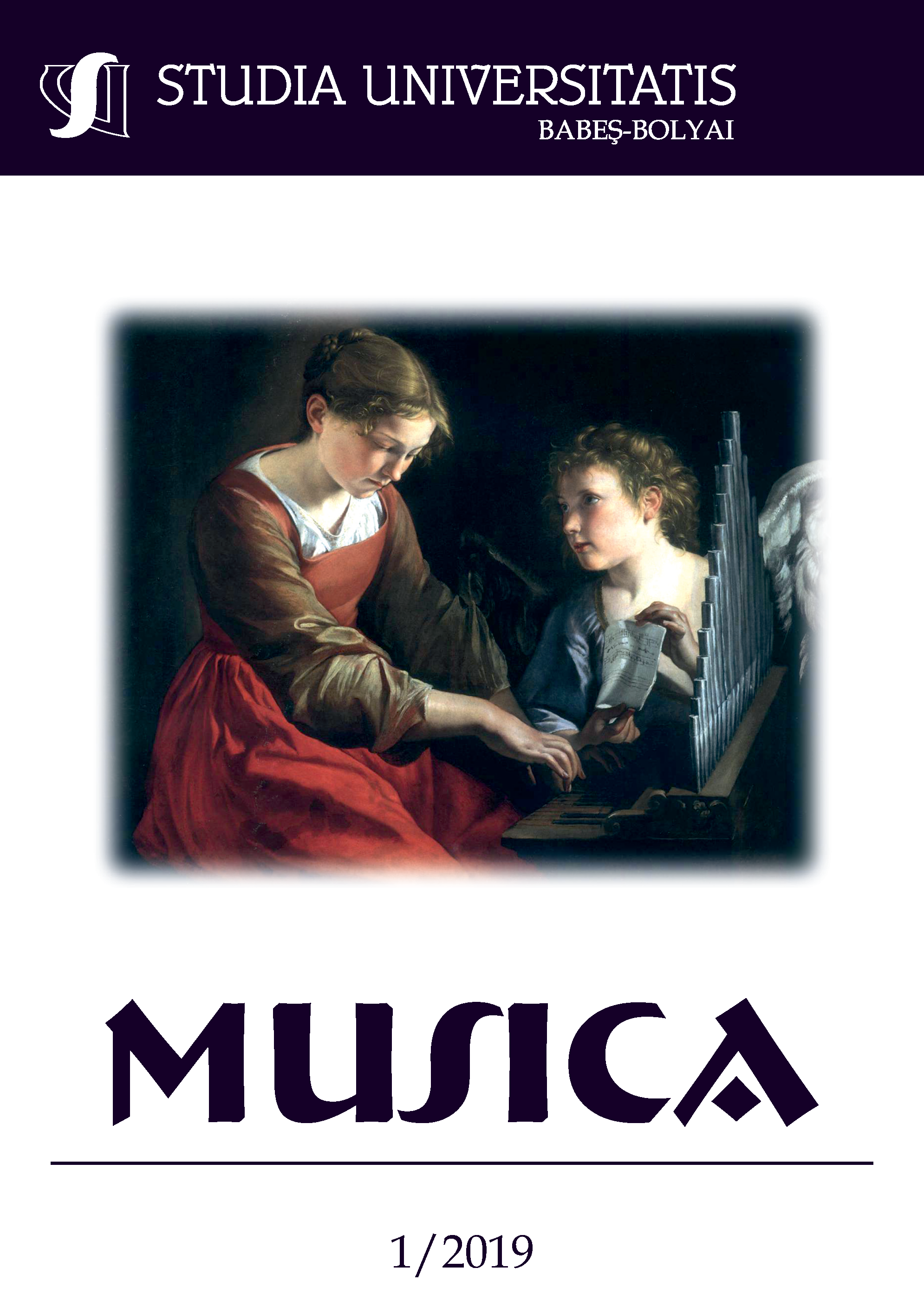ONTOLOGICAL AND AESTHETIC QUALITIES OF A SINGING SOUND
DOI:
https://doi.org/10.24193/subbmusica.2019.1.05Keywords:
being, singing culture, singing sound, artistic creation, ‘the inexpressible’.Abstract
The paper aims to reveal the existential qualities of a singing sound associated with a person’s spiritual and creative potential. Unlike any other voice manifestation of a person, a singing sound always represents the ideal area of a person’s existence and thus reveals the connection with the individual’s mental and creative potential. To reveal these relations, the authors used Heidegger’s philosophical aesthetic approach and Sintsov’s theory of the ‘inexpressible’ in art and culture, which examine the ontological foundations of artistic phenomena. The expression of certain continual mental processes that are not directly related to the production and formation of certain meanings should be the initial task of a singing sound. A singing sound can be viewed as a manifestation of artwork (Heidegger) since in its ‘material component’, it expresses the ‘essence’ and ‘truth’ of man as a creator, acts as a source of man’s multiple relations with the world (‘being-in-the-world’), is characterized as ‘composite’ due to having an idealistic-materialistic nature, and contains in itself a reason for self-movement. The source of the entelechy of singing sound is ‘inexpressible’ and contains all stages of its being (‘pre-sounding – sounding – post-sounding’). The revealed qualities of a singing sound, artistry and the connection with the ‘inexpressible’, allow defining singing sound as an existential phenomenon. Keywords: being, singing culture, singing sound, artistic creation, ‘the inexpressible’. The paper aims to reveal the existential qualities of a singing sound associated with a person’s spiritual and creative potential. Unlike any other voice manifestation of a person, a singing sound always represents the ideal area of a person’s existence and thus reveals the connection with the individual’s mental and creative potential. To reveal these relations, the authors used Heidegger’s philosophical aesthetic approach and Sintsov’s theory of the ‘inexpressible’ in art and culture, which examine the ontological foundations of artistic phenomena. The expression of certain continual mental processes that are not directly related to the production and formation of certain meanings should be the initial task of a singing sound. A singing sound can be viewed as a manifestation of artwork (Heidegger) since in its ‘material component’, it expresses the ‘essence’ and ‘truth’ of man as a creator, acts as a source of man’s multiple relations with the world (‘being-in-the-world’), is characterized as ‘composite’ due to having an idealistic-materialistic nature, and contains in itself a reason for self-movement. The source of the entelechy of singing sound is ‘inexpressible’ and contains all stages of its being (‘pre-sounding – sounding – post-sounding’). The revealed qualities of a singing sound, artistry and the connection with the ‘inexpressible’, allow defining singing sound as an existential phenomenon.References
Andguladze, Nodar, Homo cantor: Sketches of vocal art, Agraf, Moscow, 2003.
Bicknell, Jeanette, A philosophy of song and singing: an introduction. Routledge. Taylor & Francis Group, London and New York, 2015.
Cisney, Vernon W., Derrida`s Voice and Phenomenon (Edinburgh Philosophical Guides EUP), Edinburgh University Press, Edinburgh, 2014.
Heidegger, Martin, The Origin of the Work of Art. Poetry, Language, Thought, Harper Collins Publishers Inc., New York, 2013.
Khan, Hazrat I., The Mysticism of Sound and Music: The Sufi Teaching of Hazrat Inayat Khan. Shambhala Dragon Editions, Boulder, Colorado, 1996.
Losev, Aleksei F., Music as a subject of logic. 1926. Retrieved from http://litresp.ru/chitat/ru/%D0%9B/losev-aleksej-fedorovich/forma–stilj–virazhenie/4
Lysenko, Sveltana Y. The peculiarities of the revival of the composer’s idea in a musical text in the artistic process of M. Musorgsky, in: Fundamental research, vol. 11, no. 9, 2013, p. 1934-1940.
Menchikov, Gennadiy P. Neoclassical philosophy: essence, content, meaning, in: Scientific notes of Kazan University. Series of Humanities, vol. 155, no. 1, 2013, p. 105-116.
Pavlov, Ilya I. The composing technique and the inexpressible: on the philosophy of L. Wittgenstein’s music, in: Newsletter of Tomsk State University. Philosophy. Sociology. Political Science, vol. 4, no. 32, 2015, p. 326-332.
Penfield, Wilder; Roberts, Lamar, Speech and Brain Mechanisms, Princeton University Press, Princeton, 2016.
Reznikoff, Iegor, On primitive elements of musical meaning, JMM, no. 3, Fall 2004 – Winter 2005, Section 2. Retrieved from http://www.musicandmeaning.net/issues/showArticle.php?artID=3.2
Rogers, Clara K., The philosophy of singing, Harper & Brothers, Kansas city, Missouri, 1893.
Schaefer, John, “Songlines”: vocal traditions in world music, in: Potter, John (Eds.). The Cambridge Companion to Singing. Cambridge University press, Cambridge, 2000.
Sintsov, Evgeniy V. The mental-gestural nature of the unconscious manifested in ornamental forms of art. 2003. Retrieved from www.phil63.ru/category/4-mixtura-verborum-2003/
Stanislavski, Konstantin, Work on oneself in the creative process of feeling. Art as reflection and cognition of life, Eksmo-Press, Moscow, 2017.
Downloads
Published
How to Cite
Issue
Section
License
Copyright (c) 2019 Studia Universitatis Babeș-Bolyai Musica

This work is licensed under a Creative Commons Attribution-NonCommercial-NoDerivatives 4.0 International License.



